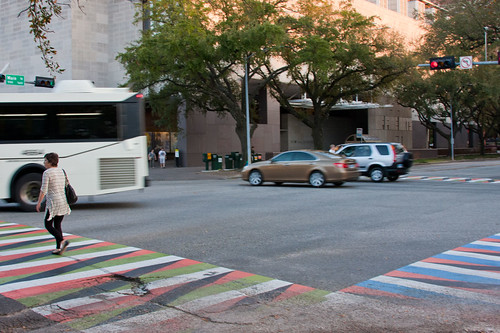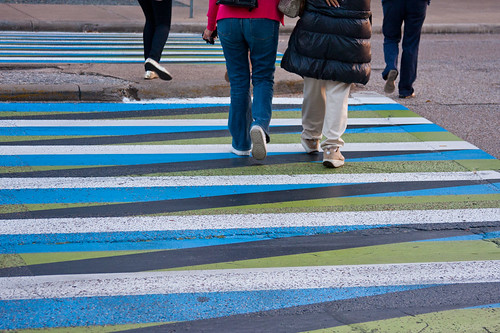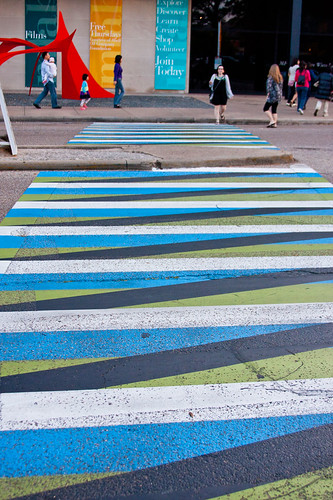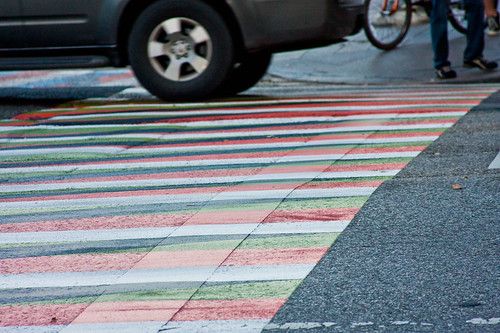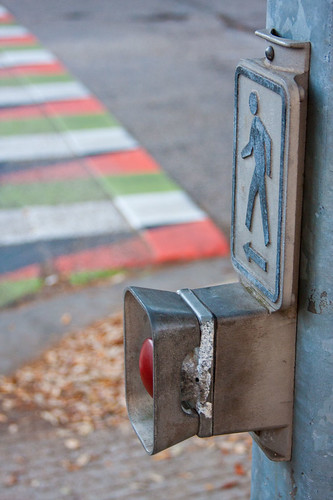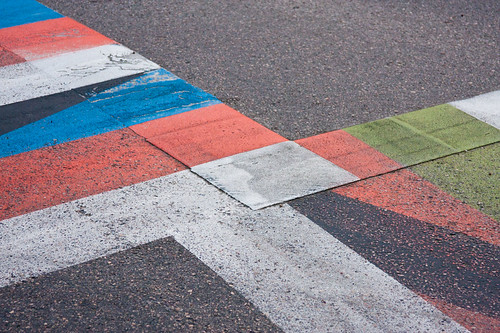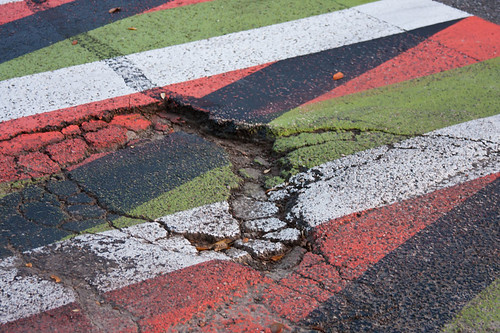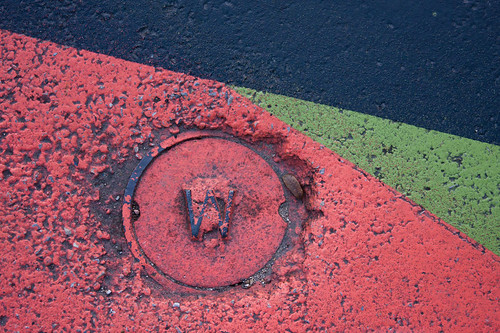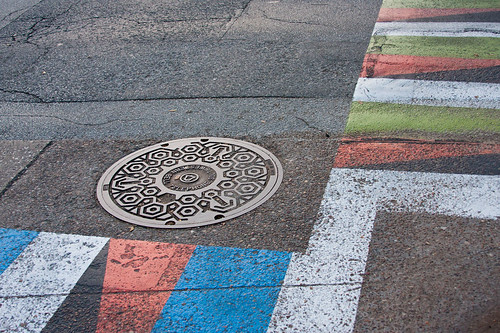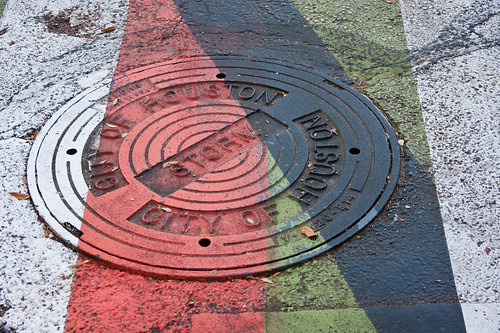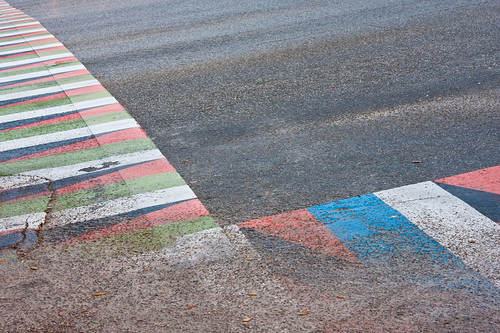
As an avid pedestrian, I have to say that Houston leaves much to be desired. Sidewalks that start and end randomly with no consideration for people who are trying to get anywhere by foot are a common problem. That is why these crosswalks next to the MFAH are a walkers oasis.
Venezuelan artist Carlos Cruz-Diez is a pioneer of optically kinetic art. The crosswalks were painted in 2009, constituting his first installation of street art in the United States. The following is a quote by Carlos Cruz-Diez:
The daily journey through urban spaces changes our personality and makes us into habitual beings who obey rules that nobody questions. The artist can create ephemeral expressions that, by generating completely new events, transform urban “linearity” and at the same time inject an element of surprise into urban routine. These ephemeral works are a way of producing different readings of urban spaces and of deconsecrating the utilitarian objects of urban furniture.
If you are fascinated by color don’t miss his exhibition Color in Space and Time, on view at the MFAH until the Fourth of July. The exhibition features more than 150 works created from the 1940s to today.
A few questions come to mind – What are the rules for painting a crosswalk? Are these crosswalks as safe as regular crosswalks?
Some quick research revealed a few interesting facts. There is no standardization of pedestrian crossings in the United States. Different types of colors and patterns are used in different parts of the country. One reason for this is that there is a large variety of types of crossings, each with its faults and merits. It’s worth noting that the different crossings are named after cute animals: Zebras, Pelicans, Puffins, Toucans, Hawks and Pegasus. For more information on this topic I recommend this article on The City Fix.
There are organizations such as TTI that are thoroughly researching the subject of which colors, materials and designs work best for crosswalks. Needless to say, any type of color variation or design experiment involves dealing with some complicated bureaucracy.
Also, this research by the FHWA has found that marked crosswalks may actually decrease safety in certain instances by causing pedestrians to be less cautious.
Many pedestrians do not understand the legal definition of a crosswalk and think that there is no crosswalk unless it is marked. They may also think that a driver can see the crosswalk markings as well as they can, and they assume that it will be safer to cross where drivers can see the white crosswalk lines.
Check out the crosswalks. Just be careful not to get too mesmerized.
